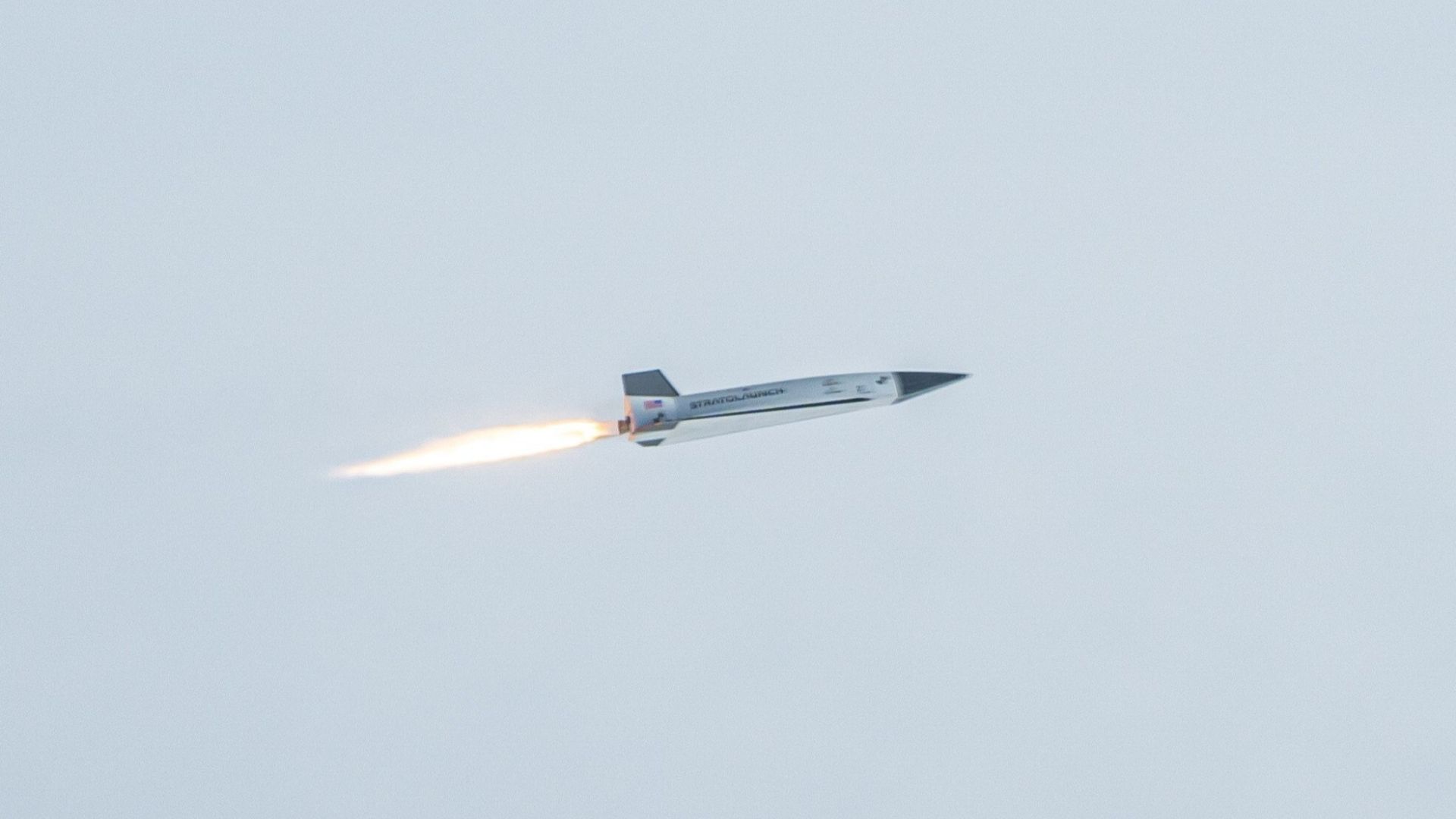In a step that could bolster the U.S.’s hypersonic weapons push, the Pentagon on Monday...

In a step that could bolster the U.S.’s hypersonic weapons push, the Pentagon on Monday confirmed the second successful test of a reusable hypersonic vehicle in March, just three months after the first trial.
The test marked the country’s first return to reusable hypersonic flight testing since the end of the manned X-15 program in 1968.
The revelation comes just days after the U.S. Department of Defense (DoD) announced it had successfully demonstrated an end-to-end hypersonic flight test using a sea-based cold-gas launch system from Cape Canaveral Space Force Station in Florida on April 25.
Milestone tests
The Stratolaunch Talon-A hypersonic vehicle was launched mid-air from the Roc carrier aircraft, flew over the Pacific Ocean, and exceeded speeds of Mach 5 before safely landing at Vandenberg Space Force Base.
These milestone tests were conducted under the Test Resource Management Center’s (TRMC) Multi-Service Advanced Capability Hypersonics Test Bed (MACH-TB) initiative.
Stratolaunch, a California-based aerospace firm, developed the Talon-A test vehicle. Its first successful flight in December 2024 was not publicly disclosed until now. Roc—the world’s largest aircraft with a twin fuselage—served as the launch platform for the Talon-A hypersonic vehicle.
“Demonstrating the reuse of fully recoverable hypersonic test vehicles is an important milestone for MACH-TB. Lessons learned from this test campaign will help us reduce vehicle turnaround time from months down to weeks,” said George Rumford, Director of the TRMC.
Reusable design saves costs
Unlike conventional single-use rockets, the reusable craft can be quickly redeployed at a lower cost, accelerating the development of next-generation weapons that fly at several times the speed of sound, reducing adversaries’ response time, and bypassing traditional defenses.
MACH-TB aims to accelerate the delivery of advanced hypersonic capabilities by enabling the Department of Defense (DoD), other federal agencies, industry, and academia to conduct affordable and rapid hypersonic experiments and test system components.
NSWC Crane awarded the MACH-TB contract to Leidos on behalf of the TRMC. Leidos, as the prime contractor, then awarded a competitive contract to Stratolaunch to provide flight test services for the program.
“With the data collected from this second flight, we are able to apply lessons learned to enhance the strength and performance of the Talon-A vehicles. While the team needs to complete its data review of flight two, the first flight review confirmed the robustness of the Talon-A design while demonstrating the ability to meet the full range of performance capabilities desired by our customers,” said Dr. Zachary Krevor, President and CEO of Stratolaunch said in a release.
“We’ve now demonstrated hypersonic speed, added the complexity of a full runway landing with prompt payload recovery, and proven reusability. Both flights were great achievements for our country, our company, and our partners,” he added.
The Talon-A test vehicle will help develop hypersonic weapons by allowing engineers to test engines, sensors, and communication systems aboard its reusable platform.
The vehicle is powered by a Hadley liquid rocket engine built by startup Ursa Major.
Hypersonic weapons fly in the upper atmosphere at speeds above Mach 5, or over 6,200 km (3,850 miles) per hour.
U.S. defense giants like Lockheed Martin, Northrop Grumman, and RTX are all advancing their hypersonic programs. Contractors are also investing in systems to detect and defend against these fast-moving threats.
The test comes as the United States intensifies its efforts to build hypersonic capabilities, joining Russia and China in a growing global race to master the technology.
Russia has reportedly used hypersonic missiles in Ukraine, while China has denied testing such weapons, despite U.S. military claims.